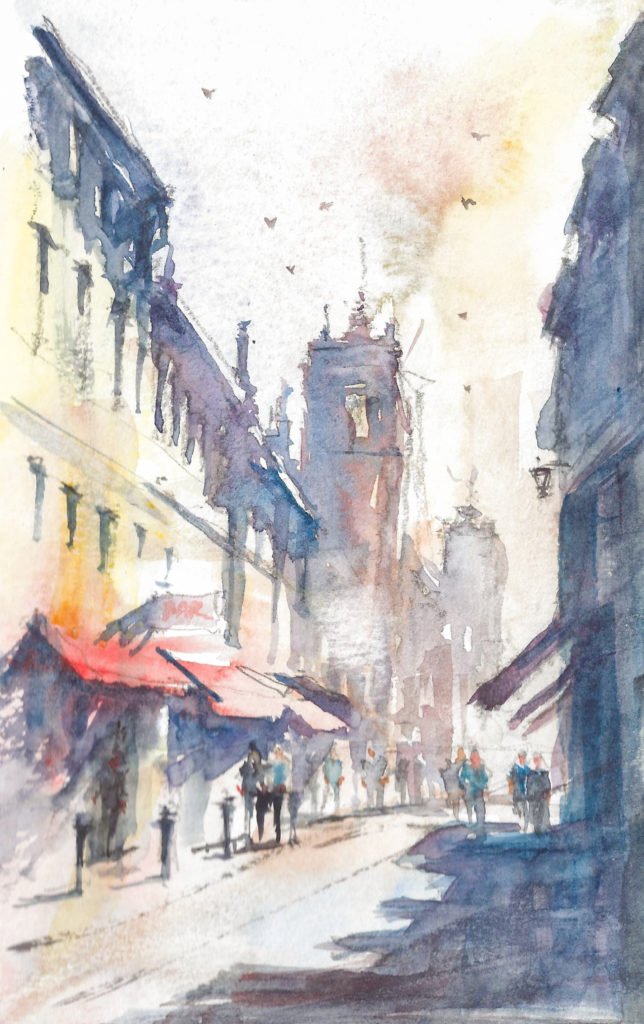A sketchbook is an integral part of art, architecture, and other creative fields. If one aims to improve upon their own work, constant drawing is a must. A sketchbook is a testing ground of ideas and a playground for drawing exercises. It helps keep track of our own thoughts and provides a reflection of the progress we have made along the way. A sketchbook is a record of your own journey both literally and metaphorically. I always have a sketchbook with me when I travel. I use my sketchbook as a place to capture my thinking and record scenes that can later be developed into a studio painting. I use it as a way to develop my architectural repertoire. To me, looking at someone’s sketchbook can help me trace the personality of the artist because the sketchbook is personal, raw, and real.
Having a sketchbook accessible allows me to constantly practice and keep records of my thoughts in visual and written form. Since improvement in drawing skills is very much associated with practicing, a sketchbook is the perfect mode for informal practice. When the outcome is not what you expected, you can simply begin again until you get better and find a satisfactory result. As John Berger mentioned, “For the artist, drawing is discovery.” The simple act of sketching forces us to examine our thoughts closely, make them visible and create an internal dialogue with oneself. A sketchbook is a perfect way to serve this purpose and it is also a way to document our progress over time.
For example, the image below is a quick sketch for the painting that is the cover image of this blog. Since the sketch aims to visualize the idea of light, composition and perspective for my painting, I used 4B graphite to quickly sketch out the composition and identify the light direction of my painting. Later on I used this sketch as a reference when I worked on my painting.

Sketching in a sketchbook requires minimal time to practice, but it is important to keep in mind that persistence is the key. Sometime a sketch does not need to be in black & white form only, but a watercolor sketch can be useful as well. There is no limitation of media that you can use for the sketching process. As long as it serves the purpose, go for it. The image below shows a watercolor sketch that I created after the graphite one.

The subject of this exercise was inspired by one of Joseph Zbukvic’s paintings.